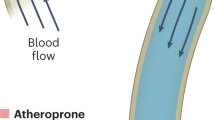Abstract
CARLILL'S attempt1 to dispel confusion in the use of the Ohm's law analogy in blood circulation theory requires further clarification, since it is only the incorrect application of this analogy that needs to be abandoned not the analogy itself, but it raises an important point. This is confirmed by Burton2 when he insists that, for vascular circuits: Resistance to flow (R) =  For a definition consistent with the electrical analogy we must have R = (P—p)/F where p is the critical closing pressure as referred to by Carlill. This gives F = P/R — p/R, which is of the form y = mx — c since p/R is constant for any single one of the lines in Carlill's Fig. 1 and gives the same result for dF/dP as in Burton's equation (4) derived from his incomplete expression of form y = mx.
For a definition consistent with the electrical analogy we must have R = (P—p)/F where p is the critical closing pressure as referred to by Carlill. This gives F = P/R — p/R, which is of the form y = mx — c since p/R is constant for any single one of the lines in Carlill's Fig. 1 and gives the same result for dF/dP as in Burton's equation (4) derived from his incomplete expression of form y = mx.
This is a preview of subscription content, access via your institution
Access options
Subscribe to this journal
Receive 51 print issues and online access
$199.00 per year
only $3.90 per issue
Buy this article
- Purchase on Springer Link
- Instant access to full article PDF
Prices may be subject to local taxes which are calculated during checkout
Similar content being viewed by others
References
Carlill, S. D., Nature, 181, 1607 (1958).
Burton, A. C., Nature, 182, 1456 (1958).
Richter, W., “Fundamentals of Industrial Electronic Circuits”, Chap. 5. (McGraw-Hill, 1947).
Author information
Authors and Affiliations
Rights and permissions
About this article
Cite this article
BURRY, H. Resistance to Flow in Vascular Beds. Nature 184, 453–454 (1959). https://doi.org/10.1038/184453a0
Issue Date:
DOI: https://doi.org/10.1038/184453a0
Comments
By submitting a comment you agree to abide by our Terms and Community Guidelines. If you find something abusive or that does not comply with our terms or guidelines please flag it as inappropriate.



